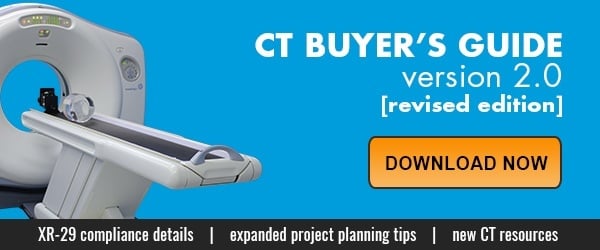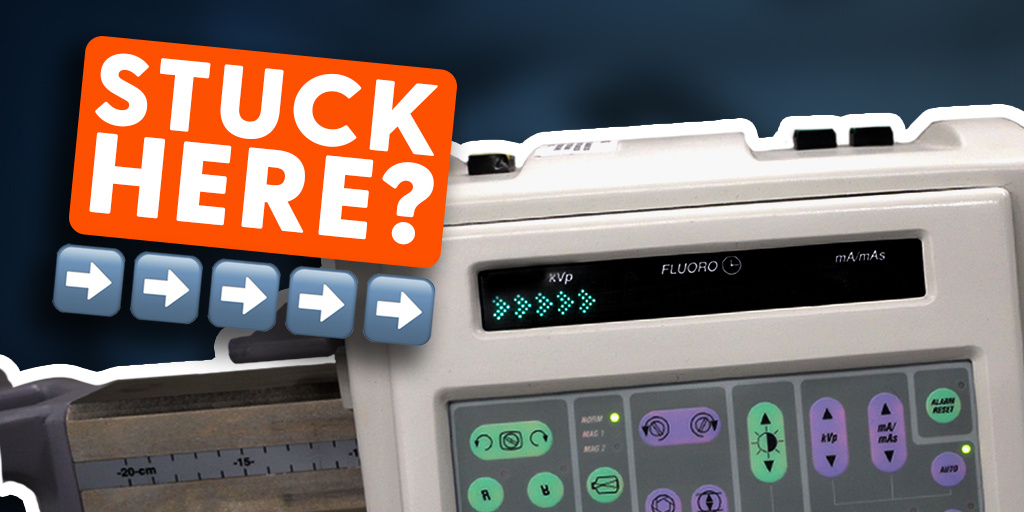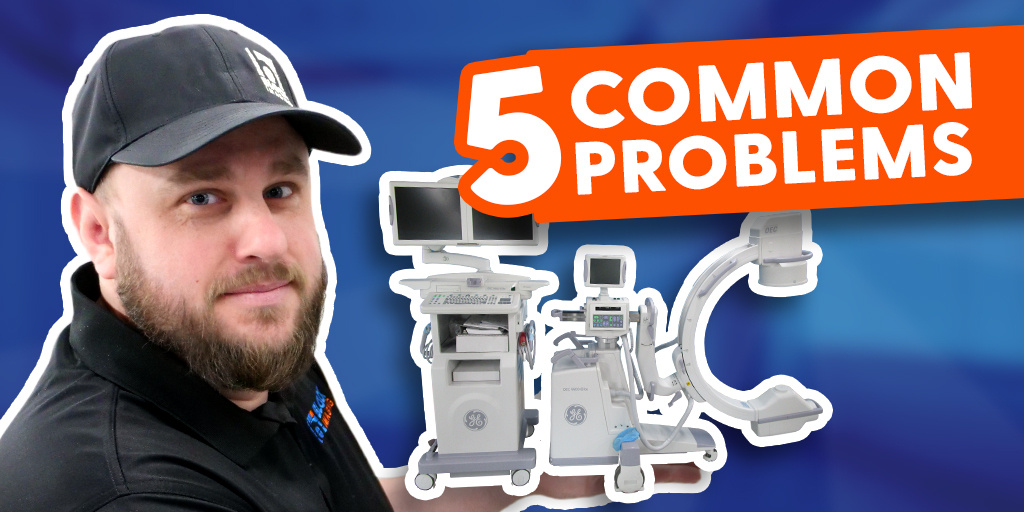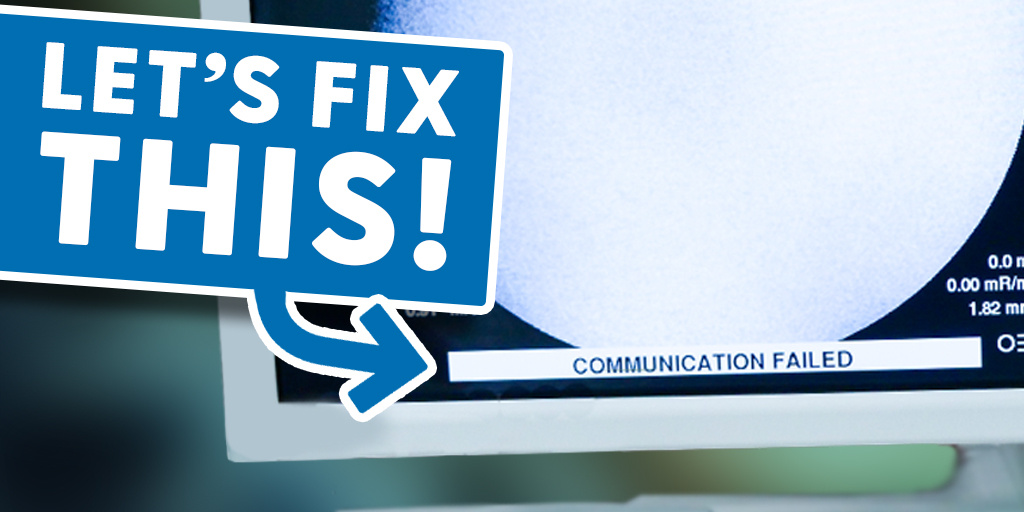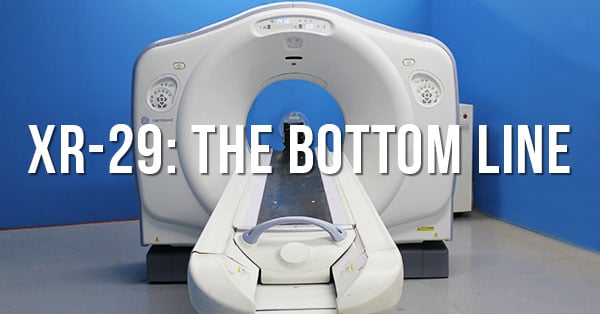
May 15, 2019 : 3 min read
NEMA Standard XR-29 for CT- What Does It Mean for You?
Thanks for stopping by to learn about XR-29. Click here to determine if your CT is XR-29 compliant: Is My CT Scanner Compliant?
Are you asking yourself if you should buy an after-market add-on to make your CT compliant? Click here to find out why the answer is probably no: NEMA Whitepaper Clarifies Aftermarket Add-ons, RDSR, and More
Remember also that XR-29 only Affects Medicare Outpatients in Hospitals and Clinics and Does not Apply to PET/CT
Last, but not least, here is A Guide to Checking Your System for XR-29 Compliance.
Keep reading here for an analysis of the law itself.
On April 1, 2014, President Obama signed into law the Protecting Access to Medicare Act of 2014 (HR 4302). Per the act, beginning in 2016, Medicare paid less for certain diagnostic CT scans performed on CT equipment that does not meet the XR-29 CT standard (MITA Smart Dose) .
What does this mean for you? For some, not a lot. Many CT scanners already meet the requirements. For others, the legislation meant replacing their system altogether or facing the applicable reimbursement cuts. To help you get a better idea of how XR-29 might affect your next CT equipment decision, we've taken a closer look at the law and the penalties below.
The Law
System attestation by providers will be verified through the periodic supplier accreditation process (e.g. Joint Commission, ACR, IAC, etc.). The CT dose standard is applicable to CT-designated HCPCS codes in which the payment source originates from the Medicare Physician Fee Schedule (PFS) or the Hospital Outpatient Prospective Payment System (HOPPS or OPPS).
You can read the legislation for yourself if you have the time. All 45 pages of it are available here.
If you’d rather not read the whole thing, maybe read just the portion applicable to your concerns. In Title II, Section 218, congress amended Section 1834 of the Social Security Act by adding a portion titled “Quality Incentives to Promote Patient Safety and Public Health in Computed Tomography.” This section of legislation applies to the following HCPCS codes:
- 70450–70498
- 71250–71275
- 72125–72133
- 72191–72194
- 73200–73206
- 73700–73706
- 74150–74178
- 74261–74263
- 75571–75574
The legislation refers to your CT scanner and its consistency with the “CT equipment standard” as they define it. In short, if your CT scanner does not meet each of the attributes of National Electrical Manufacturers Association (NEMA) Standard XR-29, your reimbursement under the above HCPCS codes will be reduced by 15%.
Examples
Here are some examples to give you an idea of how deeply the penalties for XR-29 non-compliance might affect you. The exact reimbursement rates used in these examples may change, but the principle remains the same- a 15% cut to any scan that falls in the code ranges above.
If HCPCS code 70488 (CT maxillofacial without and with dye) is reimbursed at $302.70 per scan, the reimbursement rate for a CT scanner that does not meet XR-29 requirements would be $257.29. That's a loss of $45.41 each time this scan is performed.
If HCPCS code 72125 (CT neck spine without dye) is reimbursed at $197.38 per scan, the reimbursement rate for a CT scanner that does not meet XR-29 requirements would be $167.77. That's a loss of $29.61 each time this scan is performed.
The Takeaway
Are these significant decreases? Yes. But are they enough of a decrease to make you rush out and spend hundreds of thousands of dollars on a new CT scanner?
It is our recommendation that you do some analysis and see what the cuts will actually do to your bottom line before you purchase a CT scanner. It might be financially feasible to spend $50,000 less to get a machine that is not XR-29 compliant (GE Ultra 8) than one that is (GE VCT 32). If you decide that you can’t afford to lose out on that 15%, then it is wise to discuss your CT options with us here at Block Imaging. We will be able to help you decipher which features you must have and which features are, perhaps, beneficial but not essential to get you into a system that is XR-29 compliant at a fraction of the cost of new. We’ve done it before. We can do it for you.
NOTE: This post is updated from a previous version to reflect the latest level of XR-29 compliance-related reimbursement penalties.

Paul Crawford
Paul Crawford is the Vice President of Equipment Solutions at Block Imaging. Paul connects with healthcare facilities across the world to offer CT solutions and manages the wholesale sales team. When Paul is not helping customers with their CT needs, he enjoys spending time with his family, watching MSU sports, and CrossFit.

